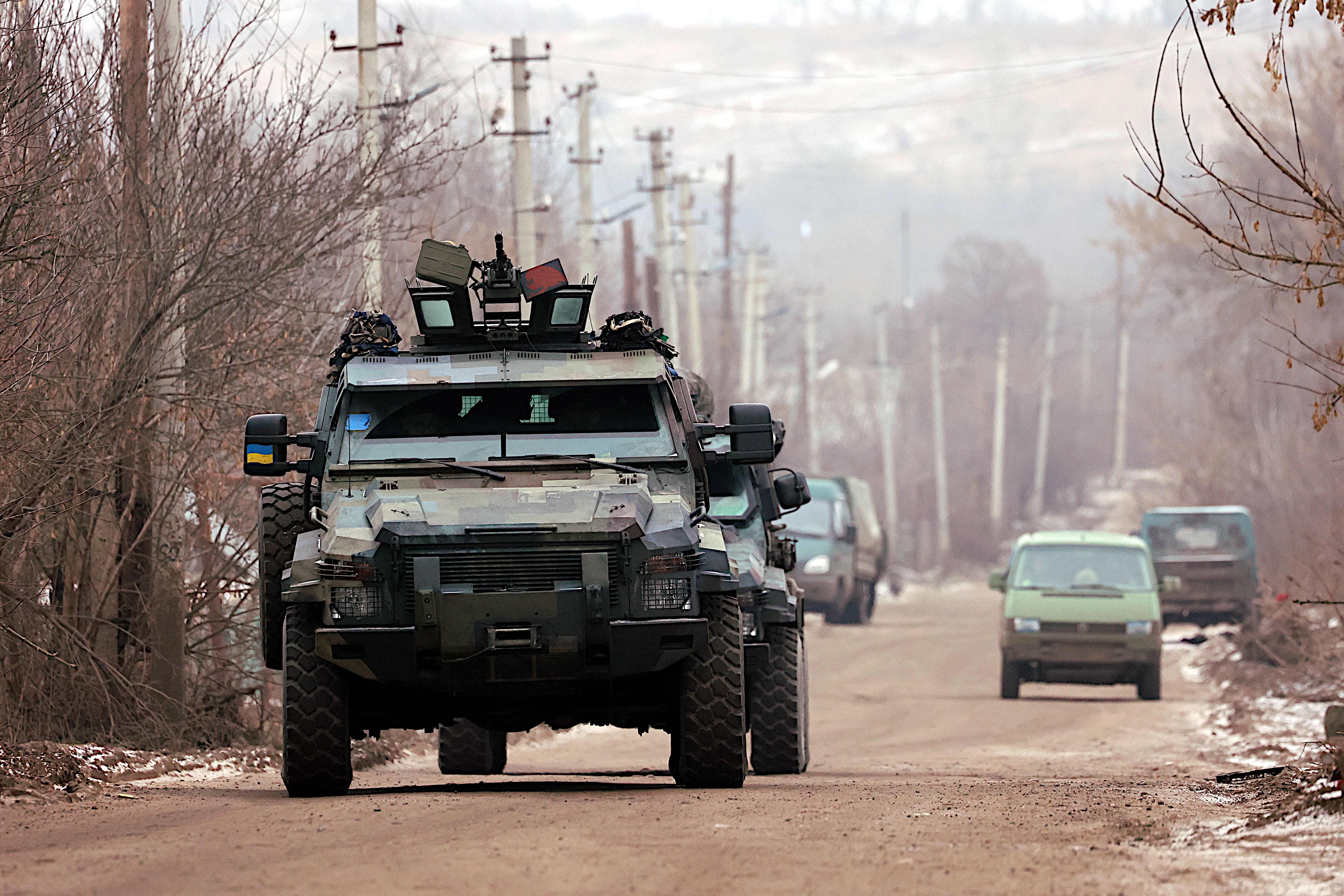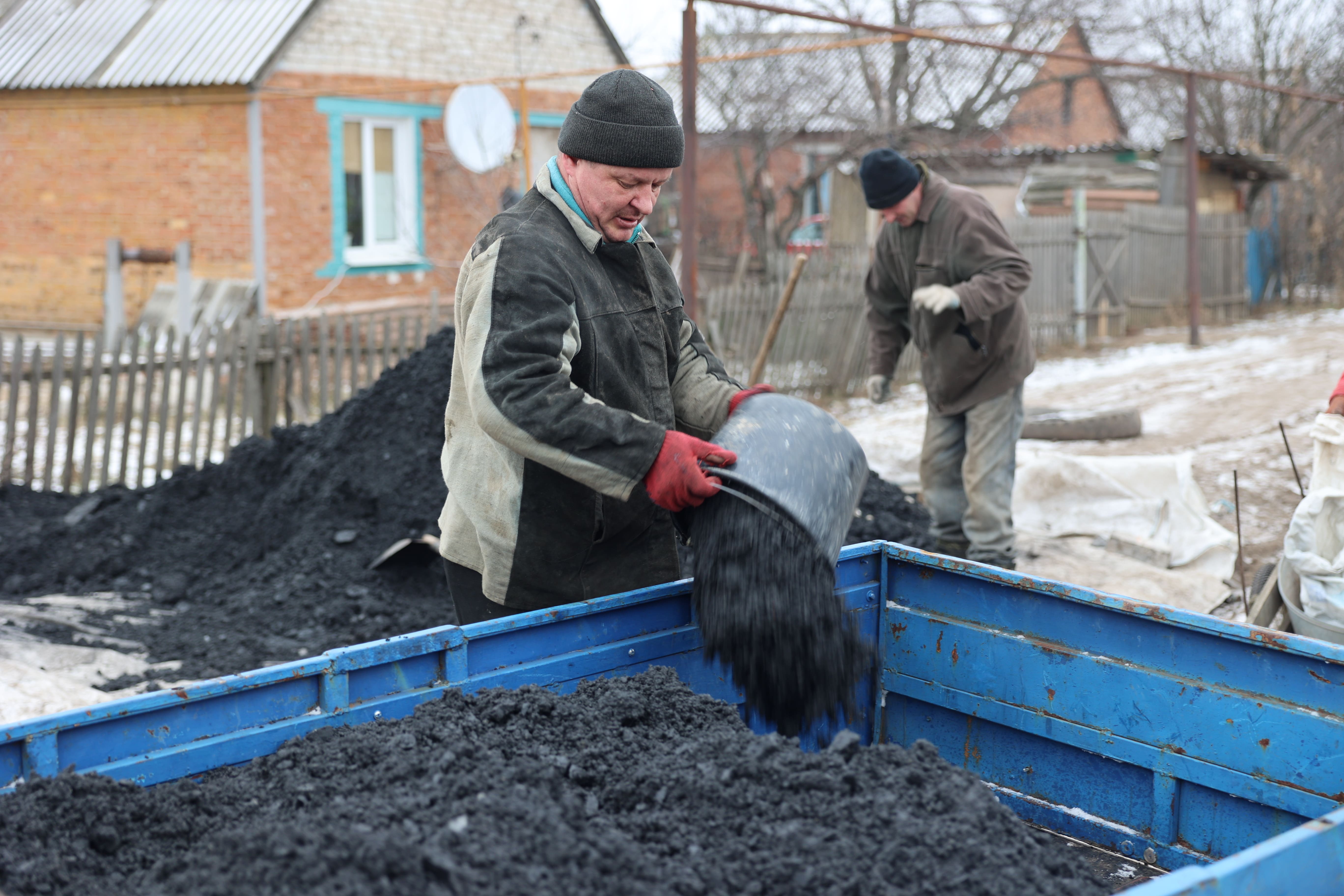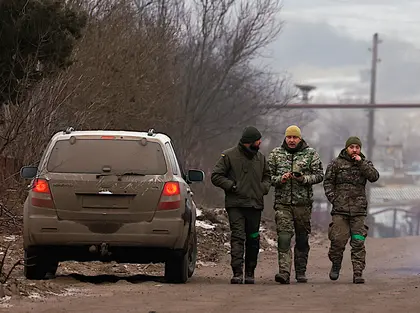Routed Ukrainian soldiers and panicked civilians were nearly impossible to find just west of the battleground town of Soledar last Sunday, Dec. 15. Nevertheless, Russian state media claimed that the town’s capture had delivered the Kremlin a decisive victory and ripped a gaping hole in Ukrainian defenses.
Kyiv Post reporters travelled through a chain of villages near Soledar, up and down a highway critical for supply to the city of Bakhmut, as well as over rural back roads in the vicinity. What they observed was a situation about as calm and routine as could reasonably be expected near the front line of fighting, within earshot of intermittent but regular artillery fire.
JOIN US ON TELEGRAM
Follow our coverage of the war on the @Kyivpost_official.
The Russian mercenary group Wagner on Thursday claimed that its “total” capture of Soledar had broken Ukrainian formations in the vicinity, triggered a major Ukrainian retreat, and placed the nearby M04 highway – a critical supply route to the adjacent city of Bakhmut – under interdicting artillery fire.
Traffic on the M04, as observed by Kyiv Post on Sunday morning and early afternoon, was safe, moving smoothly, and under fire. Most were military vehicles seeming to go about fairly hum-drum tasks: a pair of BTR armored personnel carriers heading to the fighting line, a low-boy trailer hauling a shot-up BMP to repair or possibly a scrap metal heap, minibuses driving by volunteers carrying food and supplies to civilians on the front line, and paramilitary police patrolling in KRAZ Spartan armored cars.

EU Transfers €1.5 Bln Raised From Russian Assets for Ukraine
At one location, well within theoretical Russian artillery range, an Armed Forces of Ukraine (AFU) combat unit riding in suburban sedans, 4WDs, pickups and school buses – all in far from showroom condition – was parked on the side of the M04. Hundreds of soldiers stood about, some hands in pockets, smoking and chatting and checking their phones, as they waited for their unit to be passed through a checkpoint.

AFU soldiers were out and about in the village Nykyforivka, eight kilometers from Soledar. Most were armed, but few wore protective vests. Of the more than 100 soldiers in and around the village observed by Kyiv Post, not a man or woman wore a helmet. Many appeared to be busy with routine military chores like changing oil on a truck, chopping wood, repairing windows in buildings, or loading and unloading vehicles. At one home, soldiers had moved a five-liter gas burner outside to the front door stoop and were cooking soup.

Soldiers observed by Kyiv Post often wore unit patches from infantry formations widely reported to have been in recent fighting in Bakhmut and Soledar. They were clean, appeared well rested and were friendly, seemingly happy to chat with a reporter. Some said they were on a break from the front line fighting in Soledar, others said they were stationed full-time in Nykyforivka. According to their accounts, Russian units led by Wagner mercenaries had captured the center of the city in heavy fighting and at the cost of extremely high casualties. Several said they would return to prepared positions in the east of the town which, because of higher terrain, dominates low ground in the center of the city.
A sergeant and artillery spotter serving with a combat unit drawn from Ukraine’s western Zakarpattia region told Kyiv Post he expects the AFU will crush further Russian attacks in the Soledar sector because now the Wagner infantry must attack across open ground under easy-to-aim shell fire, without the cover of buildings. Current ammo supplies do not allow firing off salvos “every time one of our drones spots two or three morons (Russian soldiers),” but shell reserves are more than sufficient to cut massed Russian infantry attacks to pieces, he claimed.
Without exception, every Ukrainian soldier interviewed said he expects Ukrainian defenses around Soledar and Bakhmut to hold. Several men laughed out loud when a reporter told them that, according to Russian state television reports, Wagner’s capture of Soledar was a major Ukrainian defeat and a decisive Russian breakthrough of Ukrainian lines, and that their unit, identified by name, had abandoned its weapons and was retreating in panic.
In the Nykyforivka village store, business was brisk and most customers were military. Shelves and floors were crammed with soldier-pleasing items like instant noodles, soda water, sausages and cheeses, cigarettes, tea and coffee, ketchup and mayonnaise, chocolate, smoked fish strips, yogurt, milk packages and kefir. The blanket, Kyiv-imposed early-war ban on all liquor sales to both military personnel and civilians in front line regions was clearly in effect: nothing intoxicating, neither cognac nor horilka, not even low-percentage beer was visible. Energy drinks, processed meats and cheeses, and bread seemed to be the big sellers.
Shopkeeper Anna Kravchenko told Kyiv Post that Russian shells or mortar rounds would hit in and around Nykyforivka day and night. She said that most villagers had long become accustomed to the strikes but many, particularly families with children, had moved out during the summer and fall, after the Kremlin named Bakhmut and towns around it like Soledar the Russian Federation’s top ground objective in the war.
Kravchenko and other civilians said that Nykyforivka prior to the war had a population of about 600, with most residents living from work at the local pig farm and pork processing plant, or from their own gardens. At present about 300 civilians are left, they said. At least every second home in the village appeared to have soldiers living in it. The majority of buildings had shell damage.
Two women living down the street said AFU units living in the vicinity sometimes provide construction materials and fuel, but in general, vegetable gardens and poultry flocks were the only really reliable means of survival. Heating, according to villager accounts, is only by wood stove. Several local residents said Russian shelling made finding fuel a bit easier by knocking down trees. At three locations along the main street, Kyiv Post observed piles of coal delivered by volunteer groups to help keep homes warm. A man loading a trailer said the fuel was clay-like and low quality, but better than nothing.
Both civilians and soldiers told Kyiv Post that the village has stable supplies of electricity, although Russian shell strikes sometimes cause blackouts for a few hours before military engineers restring power lines. Most of the village has phone coverage and, at some locations, Kyiv Post was told, decent internet.
A woman identifying herself as Evangalina said that she and other older residents were staying on because without them, their ducks, chickens and nanny goats would die. She said she was confident the village would stay under Ukrainian control, and that AFU defensive lines just to the east were strong and would hold. Other residents said much the same.
You can also highlight the text and press Ctrl + Enter






